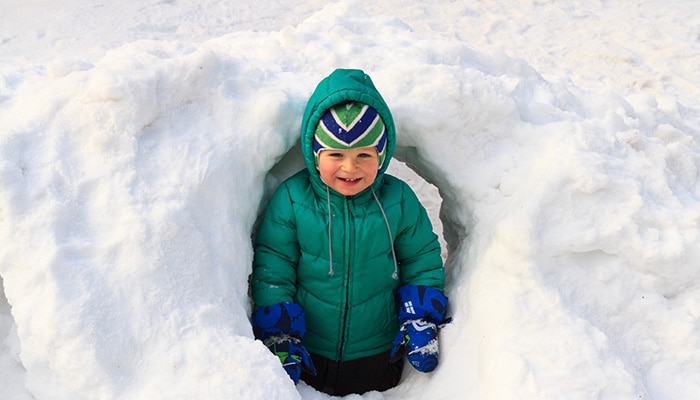While we believe that the books and resources recommended may be of value to you, keep in mind that these are suggestions only and you must do your own due diligence to determine whether the materials are appropriate and suitable for your use. PNC has no sponsorship or endorsement agreement with the authors or publishers of the materials listed.
WINTER

Animals in Winter
Children will explore ways animals prepare for winter.

Lesson Objective
Children will explore different ways animals prepare for winter and make a hibernation cave.
ScienceArtMusic
What You'll Need
- Small tissue boxes with the open end cut off – 1 per child
- Black and brown paint – 1 bottle of each
- Sticks and dried leaves – enough for each child to cover their box
- Straw – 1 handful per child
- Small paper plates – 1 per child
- Paintbrushes – 1 per child
- Glue – 1 bottle per table
- Scissors – 1 per child
- Markers or crayons – 1 pack per 2 children
- Plastic animals – at least 1 per child
What To Do
- Discuss the ways different animals prepare for winter, and the difference between true hibernators and winter sleepers (see Did You Know?).
- Tell the children they will be making a hibernation cave.
- Display the materials and ask the children how they could create a cave for hibernation out of them.
- Allow each child to choose a tissue box.
- Place the plates of paint, paintbrushes, glue, sticks, leaves, and straw on the tables and let the children go to work.
- Ask the children questions about what animals need for their winter home (see Guiding Student Inquiry).
- Allow the children to choose a plastic animal to place in their cave for winter hibernation.
Resources
Home School Resources
Home educators: use these printable lesson PDFs to teach this lesson to your home schoolers. They're available in English and Spanish.
Content Provided By
Common Core State Standards Initiative – These lessons are aligned with the Common Core State Standards ("CCSS"). The CCSS provide a consistent, clear understanding of the concepts and skills children are expected to learn and guide teachers to provide their students with opportunities to gain these important skills and foundational knowledge [1]. Visit the CCSS


